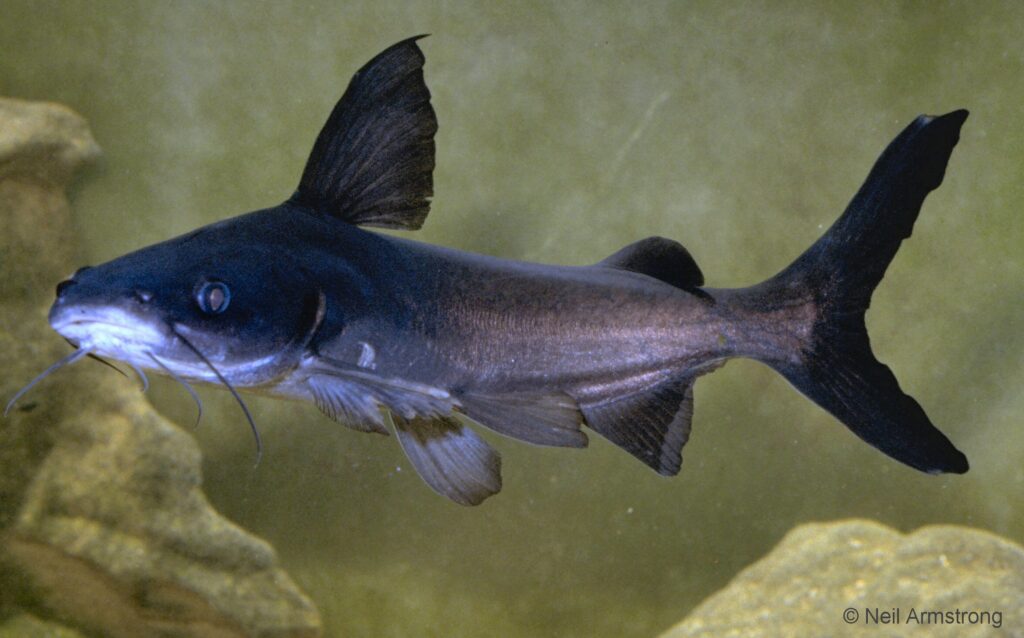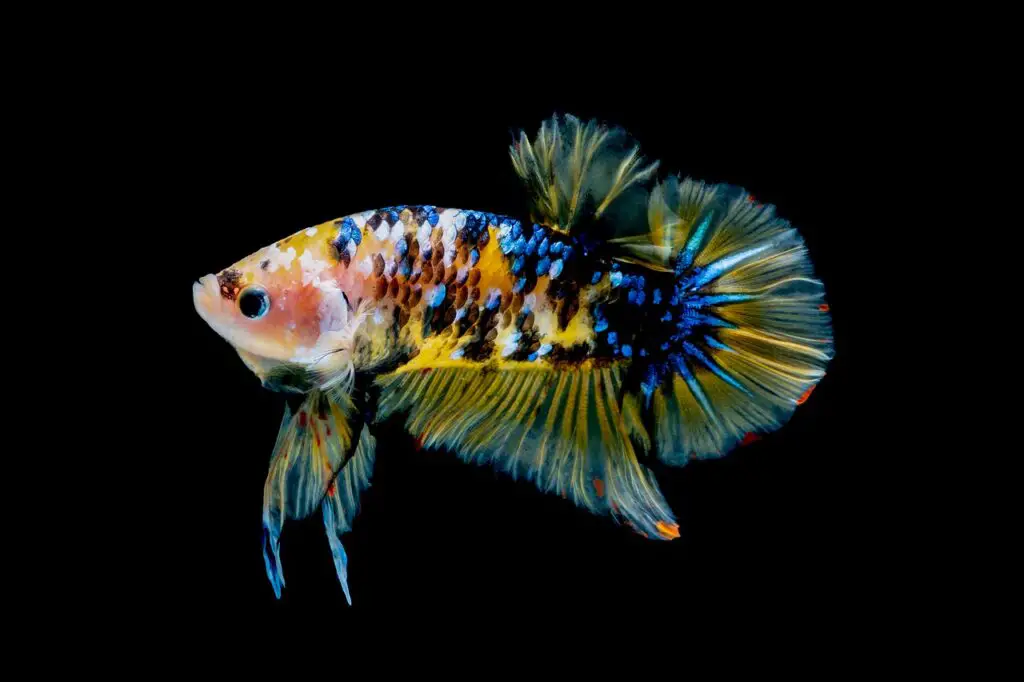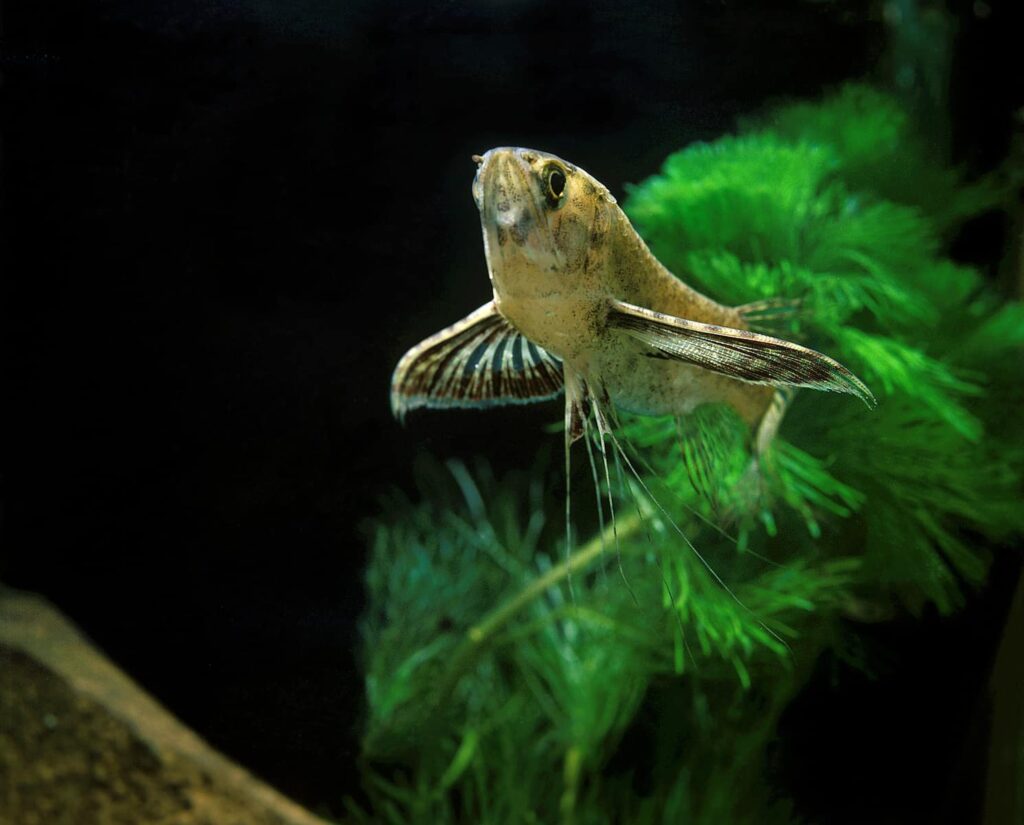Ever thought of introducing a catfish into your aquarium? The Berneys Shark Catfish might just be what you’re looking for.
This fish has distinct appearance with three pairs of ‘whisker’ like features by its mouth. Found in the South Pacific, this interesting fish is from the Arridae family and can be kept in captivity in a suitably large aquarium and with the right diet.
Do keep in mind that all catfish grow to be huge in length – so make sure you have a suitably big tank to keep them in! Don’t worry, as you can take a look at our full guide below to learn more about how to set things up for them.
- Fish Lifespan: Up to 15 Years
- Tank Size: At Least 250 Gallons
- Water Temperature: Between 68F and 82F
- pH: Between 6.4 and 8.0
- Hardness: Between 6 and 16 dH
- Compatibility: Compatible with Most Fish – Need to Be Smaller
- Fish Size: Up to 15 Inches
How do you take care of Berneys Shark Catfish?
These fish enjoy company and in the wild swim in shoals. Difficult to replicate in captivity, it is essential to give these fish enough space if you want them to be content.
Ideally, another one or two Berneys Shark Catfish with the ideal ratio of one male to two females will work really well together. It is essential the tank is large and comfortable with plenty of space top explore with ideally some interesting features and rocks.
Of all the Catfish for aquariums, the Berneys is fairly mild-mannered, providing the food is adequate and some daylight/night hours are observed – to mimic conditions similar to those in the wild.
Ideally, these catfish should get an average of 8 to 10 hours of very dim light or darkness, so it’s a good plan to switch off the lights on your aquarium when you go to bed and put the light back on when you rise. This emulates conditions in the wild and creates a rhythm of behaviour.
Berneys are usually peaceful, docile fish, and can share an aquarium with other different types of fish providing they are of a similar size. After breeding, it is usual to separate offspring so that they are not eaten.
What do Berneys Shark Catfish eat?
Berneys Shark Catfish are carnivores and eat shellfish, other fish and will eat some vegetable matter – however, they are principally interested in eating meat. Live, dried or frozen food are ideal for these critters.
They also enjoy eating aquatic plants and insect larvae. It is best to keep an eye how much is consumed and ensure that as debris falls to the bottom it doesn’t decay and contaminate the water.
These fish eat all kinds of tank debris too, but the key to keep them healthy is water quality – good filtration is essential. Specialist suppliers of catfish usually also supply food specifically for them, and experienced owners usually store a mix of drive shrimp as well as offering fresh shrimp as part of the regular diet.
Dried algae is also nutrient-rich and convenient to store and feed your catfish with. Fresh food and heavier meat food tend to sink rapidly towards the bottom of the tank. Dried, flaked food such as shrimp and algae takes longer to sink, and therefore fish swimming at different levels have an opportunity to catch their supper! A mixed diet creates more interest and a wide range of nutrients to help keep your catfish healthy.
How long do Berneys Shark Catfish live for?
Berneys Shark Catfish live between an average of 5 to 15 years, usually living longest in the wild. They can achieve double figures in aquariums if cared for well – providing this is in large enough tanks which are not overstocked and with enough space to swim reasonable, uninterrupted lengths.
They are known to be intelligent fish and use their teeth as tools, knowing to keep them in good shape. Owners are advised to check on the condition of teeth from time and ensuring catfish have enough coarse material to gnaw at, is a good idea for oral health. In the wild, crustaceans aid them with this, and it’s wise to ensure some shellfish are available from time to time.
Are Berneys Shark Catfish easy to keep?
These fish are not always easy to find for purchase, and specialist suppliers may require you to order them. Once available for collection, specialist suppliers will advise on care and perhaps also sell food specifically suited to these meat eaters.
It’s a good idea to keep a mix of fresh, frozen and dried food in store and alternate the types of food you give. If you have a mixture of fish in your aquarium, it is also a good idea to watch out for aggression and injury. Catfish have teeth and whilst they usually have a calm disposition, it is possible they will retaliate to an attack.
Therefore, we generally advise these fish are good for intermediate fish keepers. We think that they make great swimmers in brackish tanks – but some experience in keeping tanks of any kind of size really is a good idea.
Should I get a Berneys Shark Catfish?
You should absolutely think about adopting a Berneys Shark Catfish if you are keen on adding a different type of character to your tank!
However, again, do make sure to look up this type of fish only when you have a few years of experience behind you. Otherwise, you may be at risk of getting in over your head. There are also other types of catfish you can introduce into your tank, meaning that if you don’t think a Berneys Shark is a good fit, you can mix things up a bit.
Why not take a closer look at other guides we have available on catfish suitable for the home brackish tank? Catfish can make for some great, long-lasting aquatic companions – take a look online at research and see how you get on.



